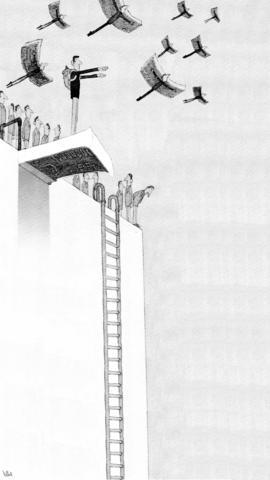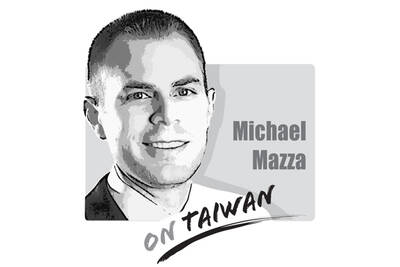This July marks the 10th anniversary of East Asia's financial crisis. In July 1997, the Thai baht plummeted. Soon after, financial panic spread to Indonesia and South Korea, then to Malaysia. In a little more than a year, the Asian financial crisis became a global financial crisis, with the crash of Russia's ruble and Brazil's real.
In the midst of a crisis, no one knows how far an economy will drop or for how long. But capitalism, since its beginning, has been marked by crises; each time, the economy recovers, but each crisis carries its own lessons. So 10 years after Asia's crisis, it is natural to ask some questions: What were the lessons? Has the world learned them? Could such a crisis occur again? Is another crisis imminent?
Some similarities exist between the situation then and today. Before the 1997 crisis, there had been rapid increases in capital flows from developed to developing countries -- a six-fold increase in six years. Afterward, capital flows to developing countries stagnated.

Before the crisis, some thought risk premia for developing countries were irrationally low. These observers proved right: The crisis was marked by soaring risk premia. Today, the global surfeit of liquidity has once again resulted in comparably low risk premia and a resurgence of capital flows, despite a broad consensus that the world faces enormous risks (including the risks posed by a return of risk premia to more normal levels.)
In 1997, the IMF and the US Treasury blamed the crisis on a lack of transparency in financial markets. But when developing countries pointed their fingers at secret bank accounts and hedge funds, IMF and US enthusiasm for greater transparency diminished. Since then, hedge funds have grown in importance, and secret bank accounts have flourished.
But there are some big differences between then and now. Most developing countries have accumulated massive foreign currency reserves. They learned the hard way what happens to countries otherwise, as the IMF and US Treasury marched in, took away economic sovereignty and demanded policies intended to enhance repayment to Western creditors, which plunged their economies into deep recessions and depressions.
Reserves are costly, for the money could have been spent on development projects that would enhance growth. Nevertheless, the benefits in reducing the likelihood of another crisis and another loss of economic independence far outweigh the costs.
This growth in reserves, while providing insurance to developing countries, created a new source of global volatility. Especially as the dollar lost its sacred place as a store of value under the Bush administration, rebalancing these multi-trillion dollar portfolios entails selling off dollar holdings, contributing to weakening of the dollar.
Developing countries have also increasingly borrowed in their own currencies during the last few years, thus reducing their foreign exchange exposure. For those developing countries that remain heavily indebted abroad, an increase in risk premia would almost certainly bring economic turmoil, if not crisis. But the fact that so many countries hold large reserves means that the likelihood of the problem spreading into a global financial crisis is greatly reduced.
In the midst of the 1997 crisis, a consensus developed that there was a need for a change in the global financial architecture: The world needed to do better in preventing crises and dealing with them when they occur. But the US Treasury and the IMF realized that the likely reforms, as desirable as they were for the world, were not in their interest.
They did what they could to ensure that no meaningful reforms occurred during the crisis, with the knowledge that after the crisis, momentum for reform would dissipate. They were more right than they knew. Who, after all, could have anticipated that former US president Bill Clinton would be followed by a US leader committed to undermining the multilateral system in all its manifestations?
For example, when the IMF correctly suggested, after Argentina's crisis, that a better way of restructuring debt (an international bankruptcy procedure) was needed, the US vetoed the initiative. When the OECD proposed an agreement that would restrict bank secrecy, President George W. Bush's administration vetoed that initiative, too.
Indeed, the two most important lessons of the crisis have not been absorbed. The first is that capital market liberalization -- opening up developing countries' financial markets to surges in short-term "hot" money -- is dangerous. It was not an accident that the only two major developing countries to be spared a crisis were India and China. Both resisted capital market liberalization. Yet today, both are under pressure to liberalize.
The second lesson is that in a highly integrated world, there is a need for a credible international financial institution to design the rules of the road in ways that enhance global stability and promote economic growth in developing countries. With the IMF so dominated by the US (it is the only country with a veto) and Europe (which, by custom, appoints its head), the Fund was long seen as representing the interests of international creditors. Its failures in the 1997 crisis further undermined its credibility, and its failure to do anything about massive global financial imbalances posing the main threat to global financial stability today, have underscored its limitations.
Reforms are still needed -- including an overhaul of the global reserve system. We may not be facing a repeat of the global financial crisis of 1997, but make no mistake, imperfections in the global financial system can still be costly, both in terms of global prosperity and stability.
Joseph Stiglitz is a Nobel laureate in economics.
Copyright: Project Syndicate
They did it again. For the whole world to see: an image of a Taiwan flag crushed by an industrial press, and the horrifying warning that “it’s closer than you think.” All with the seal of authenticity that only a reputable international media outlet can give. The Economist turned what looks like a pastiche of a poster for a grim horror movie into a truth everyone can digest, accept, and use to support exactly the opinion China wants you to have: It is over and done, Taiwan is doomed. Four years after inaccurately naming Taiwan the most dangerous place on

Wherever one looks, the United States is ceding ground to China. From foreign aid to foreign trade, and from reorganizations to organizational guidance, the Trump administration has embarked on a stunning effort to hobble itself in grappling with what his own secretary of state calls “the most potent and dangerous near-peer adversary this nation has ever confronted.” The problems start at the Department of State. Secretary of State Marco Rubio has asserted that “it’s not normal for the world to simply have a unipolar power” and that the world has returned to multipolarity, with “multi-great powers in different parts of the
President William Lai (賴清德) recently attended an event in Taipei marking the end of World War II in Europe, emphasizing in his speech: “Using force to invade another country is an unjust act and will ultimately fail.” In just a few words, he captured the core values of the postwar international order and reminded us again: History is not just for reflection, but serves as a warning for the present. From a broad historical perspective, his statement carries weight. For centuries, international relations operated under the law of the jungle — where the strong dominated and the weak were constrained. That
On the eve of the 80th anniversary of Victory in Europe (VE) Day, Chinese Nationalist Party (KMT) Chairman Eric Chu (朱立倫) made a statement that provoked unprecedented repudiations among the European diplomats in Taipei. Chu said during a KMT Central Standing Committee meeting that what President William Lai (賴清德) has been doing to the opposition is equivalent to what Adolf Hitler did in Nazi Germany, referencing ongoing investigations into the KMT’s alleged forgery of signatures used in recall petitions against Democratic Progressive Party legislators. In response, the German Institute Taipei posted a statement to express its “deep disappointment and concern”